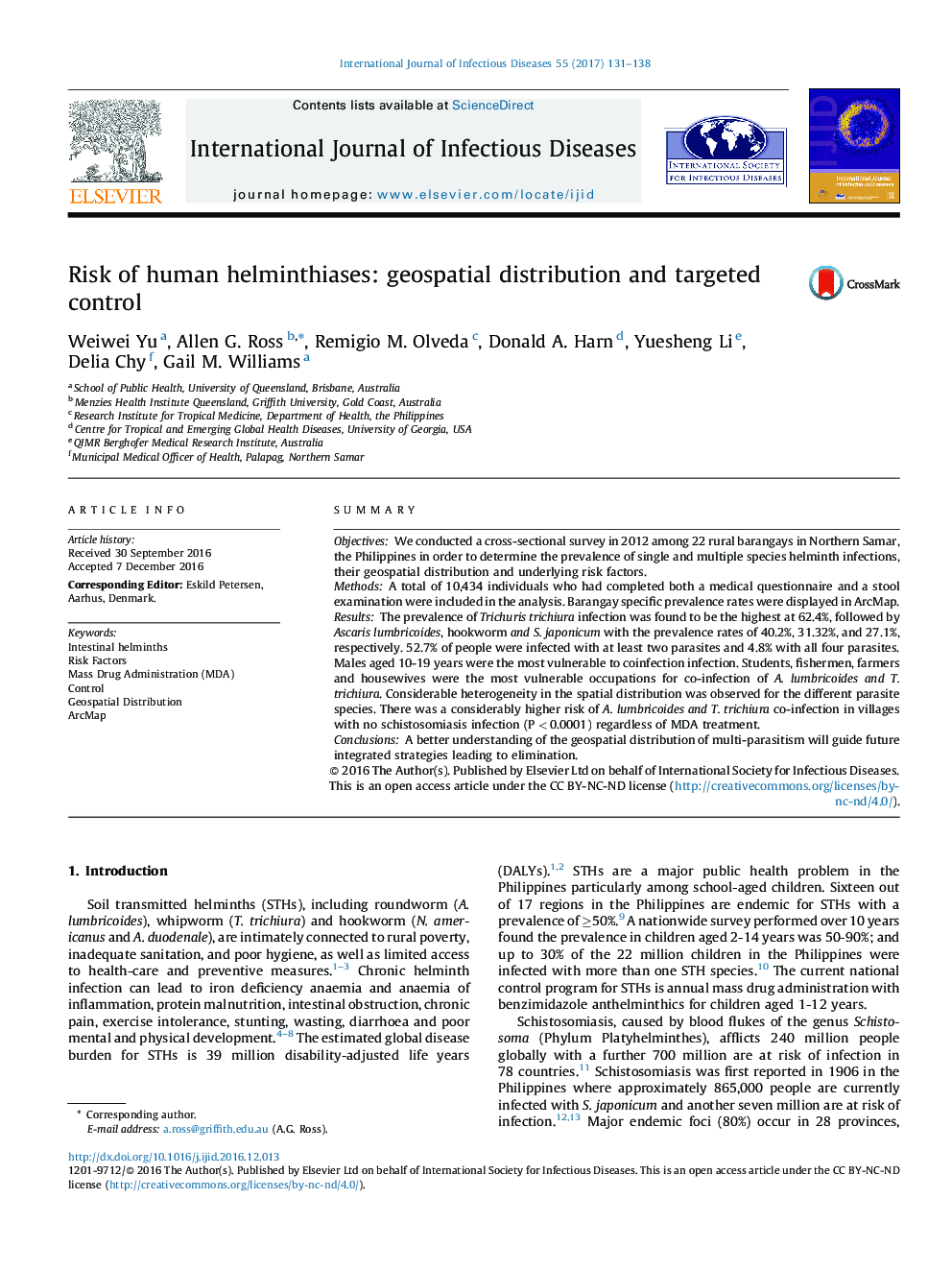| کد مقاله | کد نشریه | سال انتشار | مقاله انگلیسی | نسخه تمام متن |
|---|---|---|---|---|
| 5667367 | 1592038 | 2017 | 8 صفحه PDF | دانلود رایگان |
- We conducted a cross-sectional survey on 10,434 individuals residing in 22 rural barangays in Northern Samar, the Philippines in order to determine the prevalence of single and multiple species helminth infections, their geospatial distribution and underlying risk factors.
- 52.7% of people were infected with at least two parasites and 4.8% with all four parasites.
- Males aged 10-19 years were the most vulnerable to coinfection infection. Student, fishermen, farmers and housewives were the most vulnerable occupations for co-infection of A. lumbricoides and T. trichiura.
- Considerable heterogeneity in the spatial distribution was observed for the different parasite species.
- A better understanding of the geospatial distribution of multi-parasitism will guide future integrated strategies leading to elimination.
SummaryObjectivesWe conducted a cross-sectional survey in 2012 among 22 rural barangays in Northern Samar, the Philippines in order to determine the prevalence of single and multiple species helminth infections, their geospatial distribution and underlying risk factors.MethodsA total of 10,434 individuals who had completed both a medical questionnaire and a stool examination were included in the analysis. Barangay specific prevalence rates were displayed in ArcMap.ResultsThe prevalence of Trichuris trichiura infection was found to be the highest at 62.4%, followed by Ascaris lumbricoides, hookworm and S. japonicum with the prevalence rates of 40.2%, 31.32%, and 27.1%, respectively. 52.7% of people were infected with at least two parasites and 4.8% with all four parasites. Males aged 10-19 years were the most vulnerable to coinfection infection. Students, fishermen, farmers and housewives were the most vulnerable occupations for co-infection of A. lumbricoides and T. trichiura. Considerable heterogeneity in the spatial distribution was observed for the different parasite species. There was a considerably higher risk of A. lumbricoides and T. trichiura co-infection in villages with no schistosomiasis infection (PÂ <Â 0.0001) regardless of MDA treatment.ConclusionsA better understanding of the geospatial distribution of multi-parasitism will guide future integrated strategies leading to elimination.
Journal: International Journal of Infectious Diseases - Volume 55, February 2017, Pages 131-138
